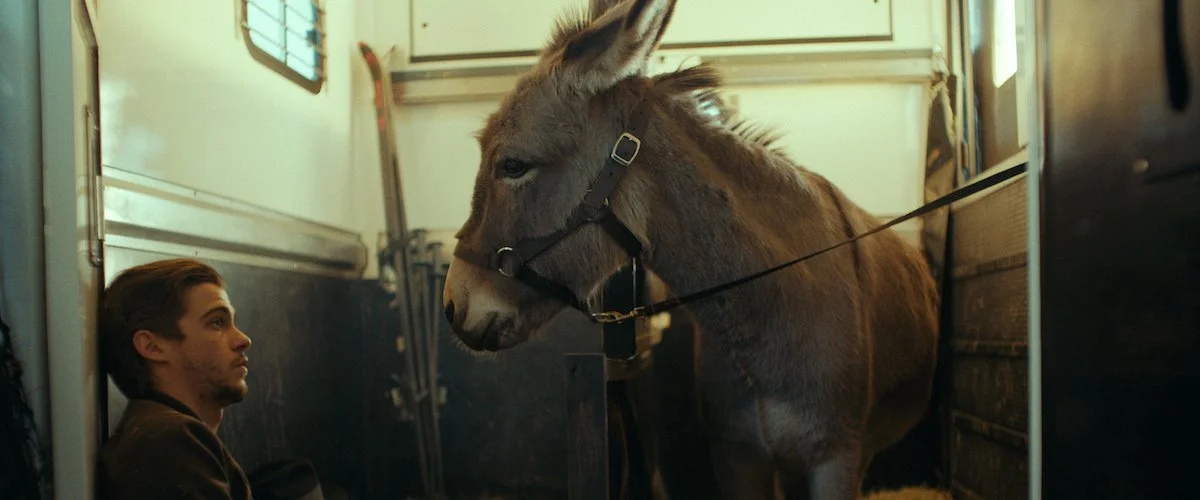Jerzy Skolimowski is a filmmaker that, in his five-decade career, has had his share of ups and downs. To me, he’ll always be the man who directed “Deep End,” “The Shout,” and “Moonlighting,” three flat-out masterpieces.
The 84-year-old has had a sort of career resurgence the last ten or so years, especially in France. If you read Cahiers du Cinema you will notice how much they loved his recent fare like “Essential Killing,” “Four Nights With Anna,” and “11 Minutes.” So, it makes sense that Skolimowski was finally welcomed back in Cannes competition with “EO”.
“EO” is a donkey movie, and an animal rights statement, that resulted in many walkouts when I saw it at the DeBussy theatre. Those who stayed gave the film hefty applause during the end credits.
Imagining what the mindset of a donkey might feel like, Skolimowski is clearly influenced here by Robert Bresson’s “Au Hazard Balthazar,” a film far more touching and depth-filled than this one, but not as visually inventive. Much like the donkey in Bresson’s masterpiece, the mule in Skolimowski’s film goes from one owner to the next.
Starting off in a Polish circus, where he is abused by the owner, donkey is quickly shipped off to a petting zoo by animal rights activists, the ensuing episodic stops all involve hardships. In fact, almost everywhere donkey goes, he’s working, doing a job, slaving away.
Initially, the film’s imagination runs wild, with a visual brilliance that plays with colored lenses and unique camera angles. The goal here is to follow donkey, but to also entice the audience with trippy visuals that make the film look more cinematic.
There is an amusing bit with donkey stumbling upon an amateur soccer team who decide to designate him as the team mascot. Another delightful moment involves a surreal gas station pit-stop. Isabelle Huppert also shows up in a strangely conceived cameo. And yet, as it is with most of these animal-driven tales, it’s a story about being born, working, and then dying.
In a way, “EO” feels like it’s part of an unintended trilogy that started with two other strikingly similar animal movies “Cow” and “Gunda.” Maybe if those films hadn’t been released before Skolimowski’s then maybe it would have felt fresher to my eyes, but it’s certainly the most inventive of the bunch. [B]






